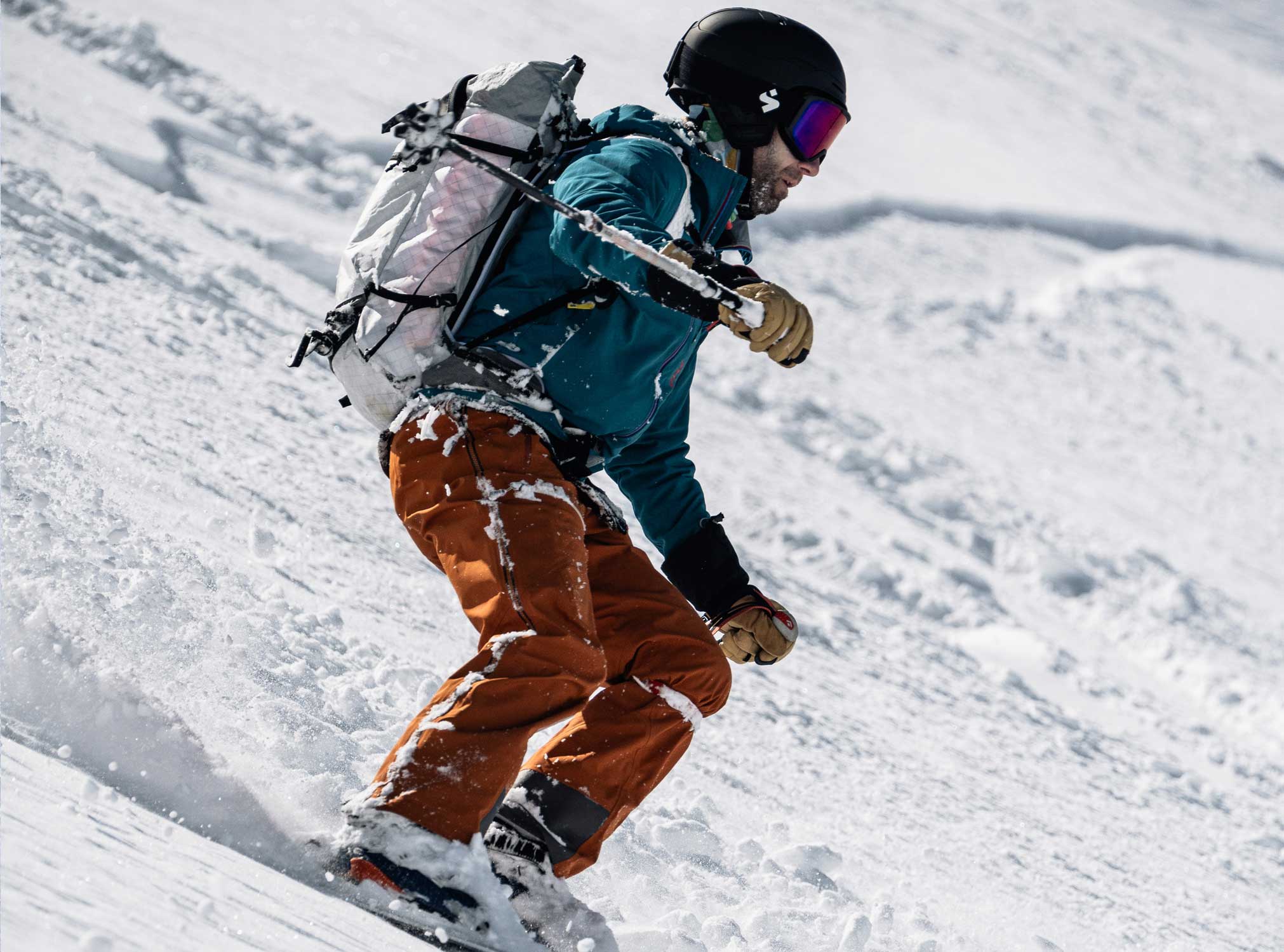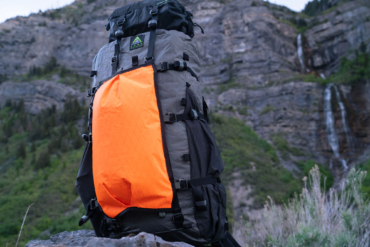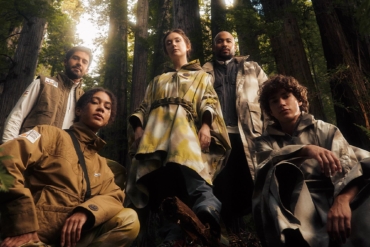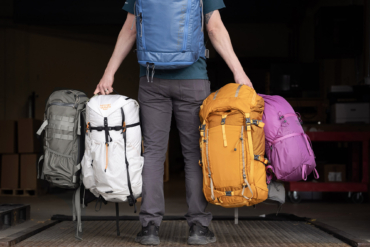A quick glance at Patagonia and The North Face’s apparel offerings suggests these brands could be interchangeable. Is that true? Here’s a deep dive into what sets these titans of the industry apart.
With instantly recognizable logos, Patagonia and The North Face represent two of the most popular outdoor clothing brands in the industry. And while the brands’ product lines and prices appear similar, there are a few key points that set them apart.
We compare a few of these icons’ best-selling products and take a peek into what efforts both are making to manage their respective environmental footprints amid the climate crisis.
Patagonia vs. The North Face
Peruse the brands’ virtual aisles, and you’ll see Patagonia and The North Face have very similar products. They even hit similar price points. When comparing these two brands, the differences you will find appear when you look into the specific details of each product — functionality, material quality, features, comfort, and style.
Patagonia focuses on men’s, women’s, and kids’ apparel, packs, and some gear. In addition to apparel, The North Face offers a wider range of gear choices including tents, sleeping bags, shoes, and other accessories.
However, when choosing between the two brands, you will find some more noticeable differences in their respective manufacturing choices.
Patagonia has a dedicated focus on reducing its social and environmental footprint when it comes to the materials used in its products. The North Face also takes many initiatives to help mitigate its impact but has not pinned its reputation to sustainability and progressive social causes as Patagonia has.
Brand History & Environmentalism
Patagonia
History & Values
Founded in 1973 in Ventura, California, by Yvon Chouinard (then an accomplished young rock climber), Patagonia’s true roots date back to 1957 when, at 19, Chouinard began creating and selling his own climbing gear.
In just a matter of 13 years, his self-made company, Chouinard Equipment, became the largest climbing equipment supplier in the U.S. It wasn’t until the early ’70s that he began to sell apparel, and thus began Patagonia with its iconic logo of Monte Fitz Roy in the Patagonia region of Argentina.
Initially, the brand’s secret to success wasn’t really a secret at all. It built a loyal following over the years based on authentically high-quality products and a passion for good causes. Since then, Patagonia has stood firmly behind its public stances on the environment — giving away $10 million of what it called “irresponsible tax cuts” and suing the Trump administration over the reduction of public lands protections.
Environmentalism
Patagonia prides itself on its activist initiatives and has set the bar high for other outdoor companies. Starting in 1986, Patagonia initially began by donating 10% of its profits to grassroots organizations. Now, one of its main company initiatives is 1% for the Planet, pledging 1% of revenue toward the preservation and restoration of the environment.
And when it comes to manufacturing, 56% of its fabrics are Bluesign-certified. A Bluesign certification means the manufacturer is producing maximum quality with minimal consumption of resources.
A significant portion of its products are made from recycled fabrics, and all of its cotton fabric is certified by the Global Organic Textile Standard. In an attempt to discourage customers from always buying brand-new products, Patagonia even offers a repair and reuse program called Worn Wear.
Meanwhile, the brand’s educational platform, Patagonia Action Works, helps promote activism and organizations it supports. Here, you can view all the opportunities in your area, ranging from events and volunteering to petitions and donations. You can also check out Patagonia’s various environmental campaigns to learn more about the specific initiatives that Patagonia supports.
The North Face

History & Values
The North Face began in 1966 from humble beginnings. The brand was founded in San Francisco, California, by a couple who had a passion for the outdoors. Douglas and Susie Tompkins began by exclusively selling climbing and camping equipment in a small retail store.
Just 2 years later, the brand was acquired, and The North Face quickly became a foster company, going through three different owners over the next 30 years. In 1993, the company even filed for bankruptcy in the midst of the transitions while under the custody of Odyssey Holdings Inc.
The brand finally got its big break in the ’90s in, of all places, New York City. The brand’s Nuptse Jacket was exactly what New Yorkers needed during their dreadful winter, and vibrant colors were in.
Alas, its moment in the spotlight didn’t last for long, and The North Face became its own worst enemy. In the late ‘90s, authorities caught the brand in fraudulent accounting. The North Face CFO Christopher Crawford and sales VP Todd Katz had been overstating the company’s revenue.
In 2000, the brand was acquired by VF Corporation — parent to such household names as Smartwool, Vans, and more. Over the past 20 years, The North Face’s revenue has steadily increased, and it’s now among the top outdoor gear brands.
Environmentalism
In recent years, The North Face has begun to step up its public position on hot-button issues, following Patagonia’s lead.
One of its older efforts is the Explore Fund, introduced in 2010. The fund provides yearly grants to nonprofit organizations that are passionate about increasing outdoor activity and protecting the environment.
In 2019, The North Face flipped one of its most popular products to recycled materials. The entire ThermoBall Collection was switched to 100% recycled synthetic materials and renamed the ThermoBall Eco.
Patagonia vs. The North Face: Product Comparison
Patagonia Nano Puff vs. The North Face ThermoBall
These lightweight, insulated jackets are great for cool weather. You can wear these insulated, packable layers in basically any setting, whether you’re going for a cold hike or simply walking to work in chilly weather.
And you won’t have to worry about holding a bulky jacket if you get too hot because both jackets can stuff into their own pockets. They are Bluesign-certified, water-resistant, and, of course, provide protection from the cold.
Patagonia Nano Puff — Men’s & Women’s: $199
This jacket has a more form-fitted style that hugs the body. Patagonia claims it retains 98% of its warmth even when it gets wet due to its synthetic PrimaLoft insulation.
The brand made the Nano Puff with 100% recycled shell fabric and 55% recycled polyester. Check out more specs and features in our review of this jacket. And it’s on sale now in select styles.
The North Face ThermoBall Eco Jacket — Women’s & Men’s: $199
The ThermoBall Eco Jacket, which recently moved to 100% recycled polyester, is very warm for a lightweight jacket, according to multiple reviews on The North Face website. The looser fit allows for more room to comfortably layer clothes underneath this jacket.
We have also tested the jacket’s ability to withstand water in the cold, and “it performed flawlessly.” For more on how the jacket weathered a dunk test in the winter, check out our review.
Patagonia Better Sweater vs. The North Face Denali 2
Comfortable and light, these fleece jackets are for everyday wear. For both brands, these products are some their best-sellers.
You can layer over them in the winter or wear them as your main layer on a cool summer night. They are versatile and fashionable. Both have full-length zippers, elastic cuffs, and come in a variety of colors.
Patagonia Better Sweater — Women’s & Men’s: $139
The Better Sweater is made out of soft, sweater-knit, recycled polyester fleece and is Fair Trade-sewn. The knitted fabric gives this sweater a cozy wool-like feel.
You get an additional pocket on the inside of the jacket for safe storage of your personal belongings. The Better Sweater is also offered in a vest, hoodie, quarter-zip, and a lightweight version. For men, you also have your choice of a shirt jacket, a rib-knit quarter-zip, and a henley.
The North Face Denali 2 — Men’s & Women’s: $179
The Denali 2 is (unsurprisingly) the successor of The North Face’s original Denali, which came out in 1988. This jacket is very warm and water-repellent thanks to its DWR coating.
It also has a nylon overlay on the chest, which comes in handy for protecting against wind and rain. There is an adjustable hem cord, so you can lock in the heat if you need to. It also comes in a hooded version. You have your pick of various colors for a fun, retro style.
Patagonia Refugio Pack vs. The North Face Borealis Backpack
You can use both these practical backpacks for daily use, a weekend trip, or even a long hike. They come in both men’s and women’s fits. The men’s packs have a spacious 28 L of storage; the women’s Refugio has 26 L while the women’s Borealis has 27 L.
These backpacks are strong contenders for work or school. Both come with two main compartments, along with a front organizational pocket. And they have secure laptop compartments, tablet sleeves, and water bottle pockets. The mesh on the back panel allows for airflow and breathability.
Patagonia Refugio Backpack — Men’s & Women’s: $89
The Refugio Pack has a modern look with a middle zipper and daisy chains lining the front panel. Additionally, the laptop compartment is multiuse and supports a hydration reservoir for hikes and other outdoor activities.
The nylon backpack is made up of 50% recycled material. The higher-quality material and thick fabric give it a durable but stylish look. It’s also weatherproof, with a DWR finish, giving your belongings an extra layer of protection from getting wet.
I own this backpack and find that it’s super comfortable. I take it with me everywhere, and it has lasted me almost 4 years (and counting).
The North Face Borealis Backpack — Men’s & Women’s: $89
Along with being a utilitarian everyday backpack, the Borealis is definitely functional for adventures as well. The pack comes with The North Face’s FlexVent suspension system which, along with the mesh back, provides you with padded back support and molded shoulder straps.
The pack is mainly nylon, and the material is thick enough to withstand some wetness. But I wouldn’t overestimate its water repellency and would keep it out of the rain when possible.
The pack comes with a waist belt and sternum strap designed for equalizing and displacing heavy loads from your shoulders. The bungee cords are useful for shoes, a hoodie, or a towel — basically anything you might want to quickly access. There’s also a reflective bike light loop, which can come in handy if you’re using the backpack at night.














